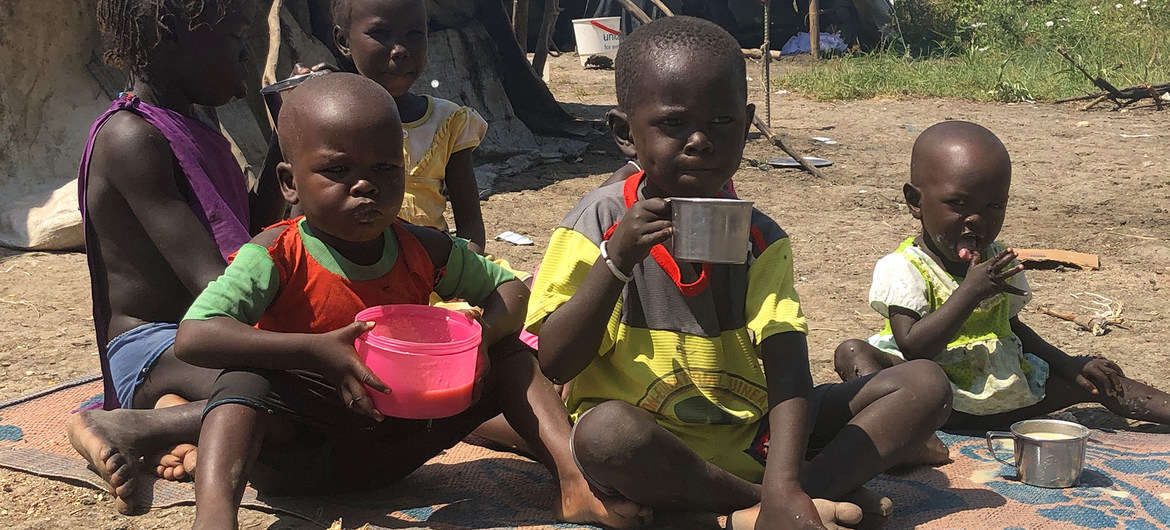The Food and Agriculture Organization (FAO), UN Children’s Fund (UNICEF), World Food Programme (WFP) and other humanitarian aid organizations, are scaling up their responses to save lives and avert a total collapse of livelihoods in hard-to-reach areas.
“We call on all parties to stop the violence and to ensure safe humanitarian access in order to prevent an already dire situation from turning into a full-blown catastrophe”, said South Sudan’s FAO Representative Meshack Malo.
A grim forecast
A new UN-backed Integrated Food Security Phase Classification (IPC) report projects that from April to July 2021, an estimated 7.24 million people, or 60 per cent of the country’s population, face either a state of official food crisis, or worsening acute food insecurity.
“The coming year will be extremely tough, but we are determined to do all we can to reach more people for longer periods of time”, said Makena Walker, WFP’s Deputy Country Director.
IPC figures – which estimate that between October and November, 6.5 million people in South Sudan faced severe acute food insecurity – follow two independent reports published by the IPC Global Support Unit last week, indicated that tens of thousands are likely to face famine conditions in Jonglei state’s Pibor county, where many families are experiencing high levels of acute malnutrition and even death.
The independent analysis also found that some communities in Akobo, Aweil South, Tonj East, Tonj North and Tonj South counties, are confronting catastrophic conditions.
“WFP is extremely worried about the rising numbers of people suffering because of the lack of sufficient food and nutrition, intensified conflict, unprecedented flooding and high food prices”, said Ms. Walker.
Children at risk
Meanwhile, in Pibor, some 1.4 million children between six months and five years old are expected to be acutely malnourished in 2021, according to the IPC report.
This includes 313,000 children experiencing severe acute malnutrition and more than a million moderate-to-acute malnutrition.
“These children need urgent treatment to prevent them from dying”, said UNICEF’s South Sudan Representative, Mohamed Ayoya.
“The data leave us with no doubt about the sense of urgency for all of us – Government, donor community and humanitarian actors – to join hands and ensure all these children get the treatment they need”, she added.
Moreover, 483,000 pregnant or breastfeeding women are acutely malnourished and in need of treatment.
This year, UNICEF has treated 170,000 children affected by severe acute malnutrition, with a 94 per cent recovery rate and will further scale up its interventions supporting therapeutic treatment and stabilization centres in the most affected counties to protect and save children’s lives.
“At the same time, we need to invest more in actions to prevent children from becoming malnourished in the first place”, the UN official underscored.
Upping assistance
Over the past two months, WFP has extended food assistance to nearly 80,000 people in Pibor and has begun scaling up aid to critically food insecure areas there and other at-risk areas.
FAO has prioritized farming and agro-pastoral communities to assist in increasing their production and preserve their livelihood.
Among other things, this year it has supported over 100,000 farming families to grow their own food from seeds, and vaccinated and treated more than five million animals, which has benefitted 164,000 households.






